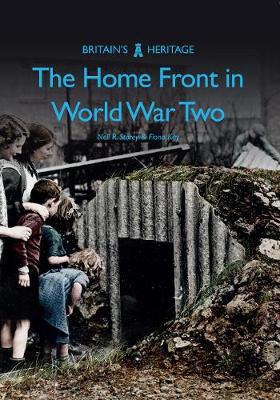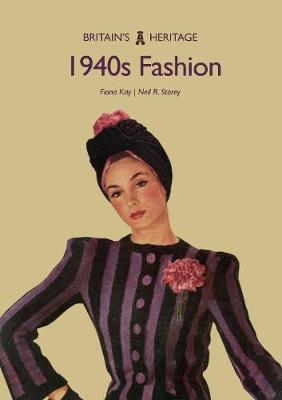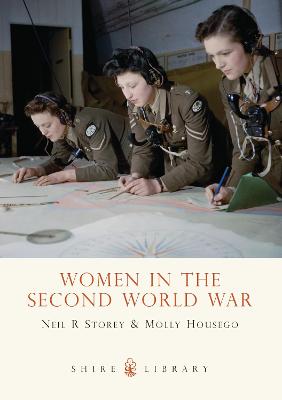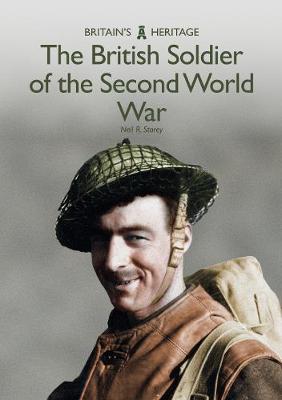Britain's Heritage
5 total works
When the Second World War broke out in September 1939, everybody in Britain knew that the civilian population would be affected far more than they had been in the First World War. As aircraft got more advanced, Britain's cities came within range and were vulnerable to attack from the air, possibly using poison gas. Before the war had started, plans were made to train civilians in first aid or to act as air raid wardens, to distribute air raid shelters that could be set up in back gardens and to evacuate children from the cities.
Soon after the start of the war, Britain's women were called up to work in the expanding factories that would feed the war effort, and on the farms in the Women's Land Army. Food and clothing were rationed to make sure that there was enough to go around. After the Germans swept through Western Europe in the summer of 1940, the Home Guard was formed to help defend against invasion.
In this book, Neil R. Storey and Fiona Kay paint an evocative picture of life in Britain during the war years, from Austerity to the friendly invasion of Americans.
This book is part of the Britain's Heritage series, which provides definitive introductions to the riches of Britain's past, and is the perfect way to get acquainted with the home front in the Second World War in all its variety.
Soon after the start of the war, Britain's women were called up to work in the expanding factories that would feed the war effort, and on the farms in the Women's Land Army. Food and clothing were rationed to make sure that there was enough to go around. After the Germans swept through Western Europe in the summer of 1940, the Home Guard was formed to help defend against invasion.
In this book, Neil R. Storey and Fiona Kay paint an evocative picture of life in Britain during the war years, from Austerity to the friendly invasion of Americans.
This book is part of the Britain's Heritage series, which provides definitive introductions to the riches of Britain's past, and is the perfect way to get acquainted with the home front in the Second World War in all its variety.
Despite - or perhaps because of - the privations of war, the 1940s was one of the greatest decades for fashion in Britain. The designs and fashions of the 1930s would linger on through the early years of the Second World War but with shortages and rationing firmly in place, the Utility clothing available in the shops had to overcome these restrictions and still look new and vivid. Because so much of the war effort depended on Britain's women, fashion was considered important for morale.
Fashion in the 1940s ranged from military uniforms (for men and women) to siren suits to be worn to keep warm in air raid shelters at night and the demob suits issued to those leaving the services at the end of the war. The mantra of 'make-do and mend' would spawn a decade of creativity, and a generation who would not let austerity prevent them from looking good. Transatlantic and military influences were everywhere, and after the war was over Dior's 'New Look' set the scene for the fashions of the prosperous
1950s.
This book is part of the Britain's Heritage series, which provides definitive introductions to the riches of Britain's past, and is the perfect way to get acquainted with 1940s fashion in all its variety.
Fashion in the 1940s ranged from military uniforms (for men and women) to siren suits to be worn to keep warm in air raid shelters at night and the demob suits issued to those leaving the services at the end of the war. The mantra of 'make-do and mend' would spawn a decade of creativity, and a generation who would not let austerity prevent them from looking good. Transatlantic and military influences were everywhere, and after the war was over Dior's 'New Look' set the scene for the fashions of the prosperous
1950s.
This book is part of the Britain's Heritage series, which provides definitive introductions to the riches of Britain's past, and is the perfect way to get acquainted with 1940s fashion in all its variety.
'Tommy Atkins' has been the nickname given to soldiers of the British Army since the eighteenth century. The origin of the name is shrouded in mystery, but it has stuck. By 1914, the Tommy had changed dramatically since the days of Queen Victoria's redcoats. Edwardian army reforms had improved recruitment and training and had re-organised the regular forces and reserves.
When the First World War broke out, the system went smoothly into action and the BEF was carried across the Channel to France. But the British Army was relatively small and the First World War required a rapid expansion of the ranks. Lord Kitchener's call for men raised the so-called New Army, half a million strong, but more were needed and conscription came into force. Many of those who volunteered together were also trained together and fought side by side in battle. In the fire of machine guns and amid the shell-fire, large numbers of men from city parishes, towns and villages fell together. Neil Storey takes us through the recruitment, equipment, training and experiences of these soldiers in the First World War: the Tommies, 'the poor bloody infantry'.
This book is part of the Britain's Heritage series, which provides definitive introductions to the riches of Britain's past, and is the perfect way to get acquainted with the Tommy of the First World War.
When the First World War broke out, the system went smoothly into action and the BEF was carried across the Channel to France. But the British Army was relatively small and the First World War required a rapid expansion of the ranks. Lord Kitchener's call for men raised the so-called New Army, half a million strong, but more were needed and conscription came into force. Many of those who volunteered together were also trained together and fought side by side in battle. In the fire of machine guns and amid the shell-fire, large numbers of men from city parishes, towns and villages fell together. Neil Storey takes us through the recruitment, equipment, training and experiences of these soldiers in the First World War: the Tommies, 'the poor bloody infantry'.
This book is part of the Britain's Heritage series, which provides definitive introductions to the riches of Britain's past, and is the perfect way to get acquainted with the Tommy of the First World War.
As the world became embroiled in the second global conflagration in just over two decades, the women of Britain once more answered the call of duty. Many of the first volunteers had served in the Great War and now they offered their services again – this time bringing their daughters with them. During World War II women proved themselves indispensable to the war effort, serving in both military units abroad and in home-front organisations through the darkest hours of the Blitz. Illustrated with contemporary black-and-white and some rare colour photographs, documents and ephemera, this poignant and moving book tells the stories of these women.
By 1945 the British Army numbered 3 million men and was about three times as large as it had been when the Second World War broke out in 1939. British soldiers could be found fighting all over the world, from France and Belgium via North Africa and the Middle East to the jungles of Burma and the Far East. Many of these men were conscripted from those aged between eighteen and forty-one, making this a true citizens' army. They would have had no previous military or combat experience, only about sixteen weeks' training.
Covering Regulars, Territorials, Corps and the Infantry from volunteering or conscription to demob, this book explores the uniforms, insignia, kit, equipment, weaponry and training of British soldiers along with their lives and experiences on active service campaigns during the Second World War.
This book is part of the Britain's Heritage series, which provides definitive introductions to the riches of Britain's past, and is the perfect way to get acquainted with British soldiers of the Second World War in all their variety.
Covering Regulars, Territorials, Corps and the Infantry from volunteering or conscription to demob, this book explores the uniforms, insignia, kit, equipment, weaponry and training of British soldiers along with their lives and experiences on active service campaigns during the Second World War.
This book is part of the Britain's Heritage series, which provides definitive introductions to the riches of Britain's past, and is the perfect way to get acquainted with British soldiers of the Second World War in all their variety.




